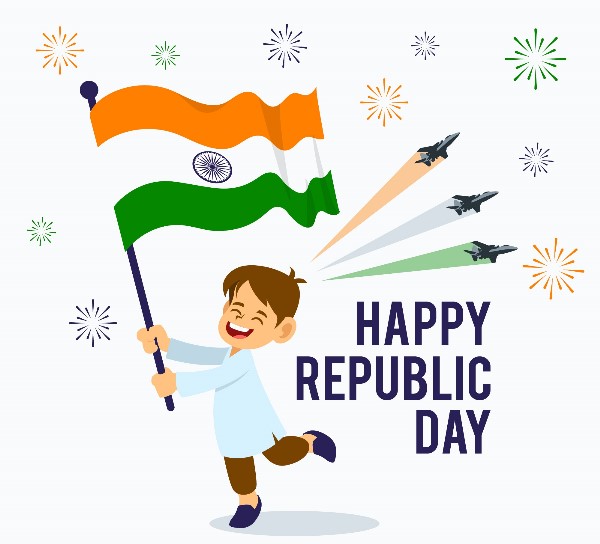Essay on Holi with happy Holi images
“Welcome to ASKMORETOLEARNMORE, where knowledge is our compass and curiosity our guiding star. Join us on a journey of exploration, learning, and inspiration as we delve into the world of wisdom, In this post we will see Essay on Holi with happy Holi images.”
Table of Contents
Happy Holi images


Essay on Holi In English
Holi: The Festival of Colors, Unity, and Joy
Introduction: ( Happy holi )
Holi, also known as the Festival of Colors, is one of the most vibrant and joyous festivals celebrated in India and by Indian communities around the world. This ancient Hindu festival is a celebration of spring, the triumph of good over evil, and the bonds of unity among people. Holi is a time for jubilant revelry, the throwing of colored powders and water, and an expression of the shared human experience. In this essay, we will explore the rich history, cultural significance, customs, and contemporary celebrations of Holi.
Historical Roots of Holi:
The origins of Holi can be traced back to ancient India, and it is deeply rooted in both Hindu mythology and agricultural traditions. Several legends are associated with the festival, contributing to its diverse and multifaceted nature.
Legend of Holika and Prahlada: One of the most popular stories associated with Holi revolves around the demon king Hiranyakashipu and his son Prahlada. Hiranyakashipu, who wanted to be worshiped as a god, forbade his son from worshipping Lord Vishnu. However, Prahlada continued to be a devoted follower of Vishnu. Hiranyakashipu’s sister, Holika, had a boon that made her immune to fire. She tried to burn Prahlada, but her plan backfired, and she perished while Prahlada survived. Holi, therefore, signifies the triumph of good (Prahlada) over evil (Hiranyakashipu and Holika).
Love Story of Radha and Krishna: Holi is also closely associated with the playful and colorful love story of Lord Krishna and Radha. According to the legend, the young Krishna, known for his pranks, complained to his mother about the fairness of his skin compared to Radha. His mother suggested that he could apply color on Radha’s face to make her like him. This playful act later evolved into the tradition of applying colors during Holi.
Connection to Agriculture: Holi’s celebration at the onset of spring also has roots in agrarian traditions. It marks the end of the winter harvest and the beginning of the sowing season. Farmers celebrate the festival as a way to give thanks for a bountiful harvest and pray for a prosperous future.
Cultural Significance of Holi:
Holi holds immense cultural and social significance in India and among Indian communities worldwide. The festival carries a range of meanings and symbolisms that reflect the rich tapestry of Indian culture.
Celebration of Spring: Holi heralds the arrival of spring, a season of rebirth and renewal. The colors and festivities of Holi mirror the vibrant and rejuvenating spirit of spring.
Unity and Brotherhood: Holi brings people together, regardless of age, gender, caste, or social status. It is a time when societal hierarchies are temporarily set aside, and people come together to enjoy the festival as equals.
Triumph of Good over Evil: The legend of Holika and Prahlada serves as a reminder of the eternal battle between good and evil, where good ultimately prevails. Holi embodies this moral lesson.
Cultural Diversity: India’s cultural diversity is celebrated during Holi. The way the festival is observed varies across different regions, reflecting the country’s pluralism and cultural richness.
Forgiveness and Reconciliation: Holi is also a time for forgiveness and reconciliation. People often resolve disputes, mend broken relationships, and renew bonds of friendship.
Customs and Traditions:
Holi is a festival known for its exuberant customs and traditions, and they vary across different regions of India. However, some customs are universally observed during Holi:
Playing with Colors: The central ritual of Holi involves smearing colored powders (gulal) and colored water on each other. People of all ages participate in this joyous activity, often engaging in spirited water balloon fights and other colorful games.
Holika Dahan: The night before Holi, a bonfire is lit in a symbolic reenactment of the victory of good over evil. People gather around the bonfire to pray for the removal of their internal and external impurities.
Sweets and Special Dishes: Sweets and special Holi dishes are prepared and shared with friends and family. Some popular Holi delicacies include gujiya, malpua, thandai, and puran poli.
Music and Dance: Music and dance are integral to Holi celebrations. People dance to traditional and modern songs, often accompanied by dhol (drums) and other musical instruments.
Processions: In some regions, grand processions are organized, featuring musicians, dancers, and people dressed in vibrant costumes. These processions are a feast for the eyes and add to the festive atmosphere.
Visiting Friends and Family: Holi is a time for visiting friends and family, exchanging greetings, and sharing the joy of the festival. It strengthens social bonds and fosters a sense of community.
Regional Variations:
Holi is celebrated with unique regional variations in different parts of India. Here are some of the notable regional Holi celebrations:
Mathura and Vrindavan: These cities in Uttar Pradesh are famous for their elaborate Holi celebrations. The week-long Lathmar Holi, where women playfully hit men with sticks, is a prominent tradition in Barsana and Nandgaon, near Mathura.
Punjab: Holi is celebrated with great enthusiasm in Punjab, often referred to as “Hola Mohalla.” It features martial arts displays, mock battles, and other physical feats.
West Bengal: In West Bengal, Holi is known as “Dol Purnima” or “Dol Jatra,” and it is celebrated alongside the worship of Lord Krishna and Radha. People create colorful processions with deities placed on decorated palanquins.
Manipur: In Manipur, Holi is known as “Yaosang,” and it lasts for six days. The festivities include traditional Manipuri dances, performances, and sports events.
South India: In South India, particularly in Tamil Nadu and Karnataka, Holi is celebrated with a focus on worship and prayer. People often visit temples to offer their devotion.
Contemporary Celebrations:
Holi’s celebration has evolved over the years and has expanded beyond India to various parts of the world where the Indian diaspora resides. Today, Holi is not limited to Hindus; people of diverse backgrounds and faiths participate in the festival. Its exuberant celebration, emphasis on unity, and vibrant colors have made it a global cultural phenomenon.
In recent years, Holi-themed events and parties have gained popularity in many countries, attracting a diverse audience. These events often include live music, dance performances, and, of course, the joyful throwing of colors.
Environmental Concerns:
While Holi is a festival known for its vivid colors and joyful expressions, there have been growing concerns about the environmental impact of the synthetic dyes and chemicals used during the festival. These concerns include:
Environmental Pollution: The disposal of chemical-laden colors and the excessive use of water during Holi can lead to water pollution and environmental damage.
Health Risks: Synthetic colors can cause skin allergies and other health problems. People have become more conscious of the need for natural and eco-friendly colors during Holi.
To address these concerns, there has been a growing movement toward celebrating eco-friendly or “green” Holi. Many individuals and organizations advocate for the use of organic and natural colors made from flowers, herbs, and vegetables.
Conclusion of Happy Holi :
Holi is more than just a festival; it is an embodiment of the spirit of India and the essence of its culture. It celebrates the arrival of spring, the triumph of good over evil, and the bonds of unity among people. It is a time when differences are set aside, and everyone becomes equal in their shared joy. Holi’s customs and traditions, ranging from the joyful throwing of colors to the delicious sweets and dishes, reflect the cultural richness and diversity of India.
As Holi continues to evolve and expand its global reach, it reminds us of the enduring power of unity, love, and the celebration of life. It is a time when people come together, regardless of their backgrounds, to celebrate the shared human experience, and to paint the canvas of life with the vibrant and joyful colors of Holi.
Happy Holi wishes
May your life be as colorful and joyful as the festival of Holi. Happy Holi!
Wishing you a Holi filled with sweet moments and colorful memories.
May your Holi be as bright as the colors you sprinkle. Happy Holi!
Let’s celebrate the festival of colors with love and happiness. Happy Holi!
May this Holi bring prosperity and success to your life. Happy Holi!
May the colors of Holi fill your heart with warmth and love. Happy Holi!
May the festival of Holi bring you all the success and happiness you desire.
Let’s play Holi and make beautiful memories together. Happy Holi!
Wishing you a Holi full of laughter, fun, and delicious sweets.
May the spirit of Holi bring positivity into your life. Happy Holi!
May your life be as colorful as the hues of Holi. Happy Holi!
Wishing you a Holi that’s as vibrant and joyful as your personality.
Let’s celebrate this Holi with the people who make our lives colorful and wonderful.
May the festival of Holi fill your life with love, happiness, and endless joy.
Here’s to a Holi filled with endless celebrations and happiness. Happy Holi!
May your Holi be sprinkled with love and laughter. Happy Holi!
Wishing you a Holi as bright and beautiful as your smile. Happy Holi!
Let’s make this Holi a memorable and colorful one. Happy Holi!
May the colors of Holi fill your world with warmth and positivity. Happy Holi!
Wishing you a Holi that’s as sweet as the gujiyas and as bright as the colors. Happy Holi!
Essay on Holi In Hindi
भारत में होली एक महत्वपूर्ण त्योहार है जो हर साल बड़े धूमधाम से मनाया जाता है। होली एक रंग भरी और खुशी भरी खेलने का त्योहार है, जिसे विशेष रूप से बच्चे और युवा लोग बड़े उत्साह के साथ मनाते हैं। यह त्योहार हिन्दू पंचांग के अनुसार फाल्गुन महीने के पूर्णिमा को मनाया जाता है, जिसे हम फाल्गुन पूर्णिमा के रूप में भी जानते हैं।
होली के त्योहार की शुरुआत होलिका दहन के रूप में होती है, जिसे होलिका के बहन के साथ होली बाड़ के चाल में मनाया जाता है। इस दिन लोग बोनफायर जलाते हैं और होलिका के दहन के साथ असुरी शक्तियों की पराजय को याद करते हैं।
फिर आगले दिन, यानी होली के दिन, लोग रंगों के साथ खेलने लगते हैं। इस दिन लोग आपस में गुलाल और अन्य रंगों की पिचकारी से रंग फेंकते हैं। होली के दिन सभी किसी के साथ खेलते हैं, चाहे वे दोस्त हों, परिवार के सदस्य हों, या पूरी समुदाय के लोग हों।
होली के खेलने के साथ-साथ लोग मिठाइयों और विभिन्न प्रकार के खास खाने पीने का आनंद लेते हैं। इस त्योहार के दौरान लोग आपस में मिलकर खुशियों का जश्न मनाते हैं और पुराने दोस्तों और परिवार के सदस्यों के साथ समय बिताते हैं।
होली का महत्व यह भी है कि यह एक रंगों का त्योहार होने के साथ-साथ समाज में एकता और प्यार की भावना को बढ़ावा देता है। इस दिन किसी के साथ खेलने के बाद लोग आपस में मिलकर गले मिलते हैं और एक-दूसरे को “होली है!” कहकर शुभकामनाएं देते हैं।
सार्वजनिक रूप से होली का आयोजन भारत भर में होता है और यह दुनियाभर के पर्वतीय क्षेत्रों से लेकर शहरों तक हर जगह मनाया जाता है। होली के त्योहार का सुंदर और रंगीन माहौल बनाता है और लोग इसे खुशियों और सजीवता से मनाते हैं।




